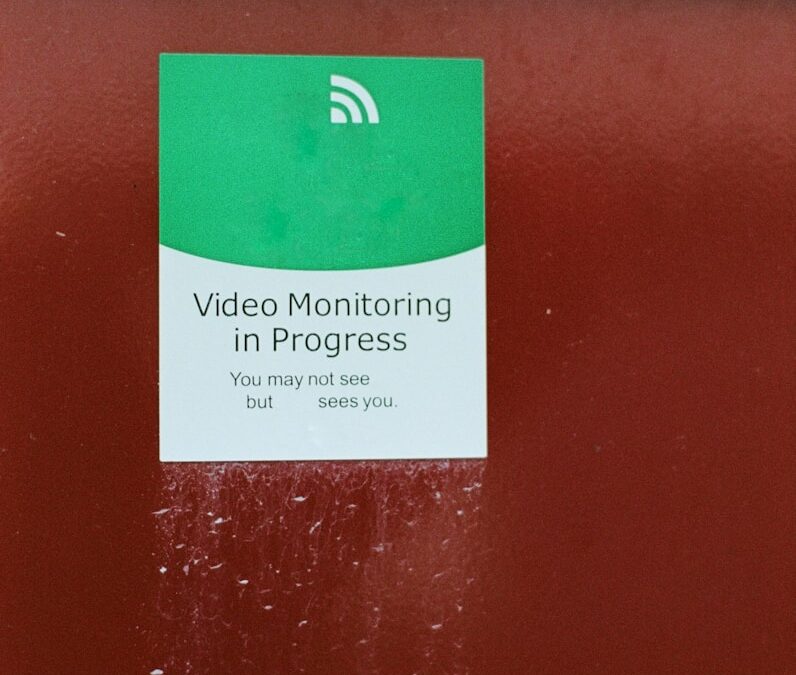The Role of Continuous Security Monitoring in IoT Networks
Integrating Continuous Monitoring with Regular Audits
In today’s increasingly connected world, continuous monitoring in IoT networks has become a critical component of comprehensive security strategies for businesses, particularly in regions like Saudi Arabia, the UAE, and major cities such as Riyadh and Dubai. As IoT devices proliferate across various industries, the potential for security breaches has grown, making it essential for organizations to adopt robust monitoring practices that go beyond periodic audits and assessments. Continuous monitoring provides real-time insights into network activity, enabling organizations to detect and respond to potential threats as they emerge.
Integrating continuous monitoring with regular audits offers a dual approach to security management. While audits provide a comprehensive review of an organization’s security posture at a specific point in time, continuous monitoring ensures that any changes or anomalies within the network are detected immediately. This proactive approach is particularly valuable in environments where IoT devices are critical to operations, such as in smart cities, healthcare facilities, and industrial settings. By combining the two strategies, businesses can ensure that their IoT networks remain secure, resilient, and compliant with industry regulations.
For instance, a manufacturing company in Dubai might rely on IoT devices to monitor production processes and manage supply chains. Through continuous monitoring, the company can immediately identify any unusual activity, such as unauthorized access attempts or data anomalies, and take swift action to mitigate risks. Periodic audits then serve to validate the effectiveness of the monitoring tools and processes, ensuring that the company’s security measures remain robust and up-to-date.
Effective Monitoring Tools for IoT Networks
To effectively implement continuous security monitoring in IoT networks, organizations need to deploy specialized tools that are capable of handling the unique challenges posed by IoT environments. These tools must be able to monitor large volumes of data in real time, detect subtle anomalies, and provide actionable insights to security teams.
One such tool is a Security Information and Event Management (SIEM) system. SIEM systems aggregate data from various sources within the network, analyze it for suspicious activity, and generate alerts for potential security incidents. SIEM systems are particularly effective in large, complex IoT networks where the sheer volume of data can overwhelm traditional monitoring solutions. For example, a hospital in Riyadh using SIEM technology can continuously monitor its network of connected medical devices, ensuring that any signs of a security breach are quickly detected and addressed.
Another valuable tool is Network Traffic Analysis (NTA) software, which focuses on monitoring and analyzing the flow of data across the network. NTA tools can identify unusual patterns of behavior, such as unexpected data transfers or unauthorized device communication, which may indicate a security threat. By providing detailed visibility into network activity, NTA tools enable security teams to investigate and respond to potential threats before they can cause significant harm. In the UAE, where smart city initiatives rely on interconnected IoT devices, NTA software plays a crucial role in maintaining the security and integrity of urban infrastructure.
In addition to SIEM and NTA, organizations can benefit from using Endpoint Detection and Response (EDR) solutions. EDR tools monitor the behavior of individual IoT devices, detecting anomalies that could indicate a compromised device. For instance, an energy company in Saudi Arabia could use EDR tools to monitor its network of IoT sensors and controllers, ensuring that any unauthorized modifications or malware infections are quickly identified and neutralized.
Strategic Benefits of Continuous Security Monitoring
Enhancing Business Success Through Proactive Security
Implementing continuous security monitoring in IoT networks offers significant strategic benefits for businesses, particularly those operating in competitive markets like Saudi Arabia and the UAE. One of the primary advantages is the ability to detect and respond to security threats in real-time, minimizing the potential damage caused by cyberattacks. By continuously monitoring their IoT networks, organizations can identify and mitigate risks before they escalate into major incidents, protecting their assets, reputation, and bottom line.
For example, in the financial sector, where IoT devices are increasingly used for transaction processing and customer service, continuous monitoring can help prevent unauthorized access to sensitive financial data. A bank in Dubai that employs continuous monitoring tools can quickly detect and respond to any suspicious activity, ensuring that customer information remains secure and trust in the institution is maintained. This proactive approach to security not only enhances customer confidence but also positions the bank as a leader in cybersecurity within the industry.
Moreover, continuous monitoring supports compliance with industry regulations and standards. Many sectors, such as healthcare, finance, and critical infrastructure, are subject to stringent data protection requirements. Continuous monitoring ensures that organizations can demonstrate ongoing compliance by providing evidence of their security measures in action. In Riyadh, where regulatory expectations for data security are high, businesses that adopt continuous monitoring can reduce the risk of non-compliance and the associated legal and financial penalties.
Leadership and Strategic Implementation of IoT Security Measures
Effective leadership is essential for the successful implementation of continuous monitoring in IoT networks. In Saudi Arabia and the UAE, executive coaching services are helping business leaders develop the skills necessary to navigate the complexities of IoT security and real-time monitoring. Leaders equipped with a deep understanding of continuous monitoring and its strategic value are better positioned to drive innovation and operational excellence within their organizations.
Executive coaching focuses on enhancing leadership and management skills, enabling leaders to make informed decisions about security investments and policies. For instance, coaching programs may cover topics such as risk management, strategic planning, and technological innovation, all of which are critical for successful continuous monitoring implementation. By fostering a culture of continuous learning and adaptation, organizations can stay ahead of emerging cyber threats and leverage advanced security technologies to protect their assets.
Additionally, executive coaching can help leaders understand the ethical and security implications of IoT deployments. With the increasing prevalence of cyber threats, it is essential for leaders to prioritize data security and privacy. Coaching programs can provide insights into best practices for implementing continuous monitoring and integrating it with regular audits and assessments, thereby building a robust security framework that safeguards organizational assets and enhances stakeholder trust.
Future Trends: The Metaverse and Generative AI
The future of continuous security monitoring in IoT networks is closely tied to emerging technologies such as the Metaverse and Generative AI. By leveraging these cutting-edge technologies, organizations in Riyadh, Dubai, and beyond can unlock new opportunities for innovation and growth. Generative AI, which involves the use of AI to create new content and solutions, can be applied to security to enhance threat detection, develop advanced monitoring techniques, and optimize response times.
For example, Generative AI can simulate various cyber-attack scenarios and predict the outcomes of different security measures, enabling organizations to make data-driven decisions with greater confidence. In the context of smart cities, Generative AI can help design more resilient infrastructures, optimize energy usage, and improve public services, contributing to the overall quality of life.
The Metaverse, a virtual world where users can interact with digital environments and each other, offers another avenue for IoT security innovation. By integrating continuous monitoring and other security measures with the Metaverse, organizations can create immersive and interactive training environments that enhance readiness and situational awareness. For instance, businesses can use virtual reality (VR) and augmented reality (AR) to provide real-time incident simulations and analytics, helping security teams make informed decisions and collaborate more effectively.
In conclusion, implementing continuous security monitoring in IoT networks is essential for optimizing security and achieving business success. By adopting advanced technologies, fostering strategic leadership, and exploring innovative solutions like Generative AI and the Metaverse, organizations in Saudi Arabia, the UAE, and beyond can enhance their operational efficiency, drive innovation, and achieve sustainable growth.
—
#IoTSecurity #ContinuousMonitoring #IoTNetworkAudits #SecurityAssessmentTools #BusinessSuccess #SaudiArabia #UAE #Riyadh #Dubai #ArtificialIntelligence #Blockchain #ExecutiveCoaching #GenerativeAI #ModernTechnology #LeadershipSkills #ManagementSkills #ProjectManagement













